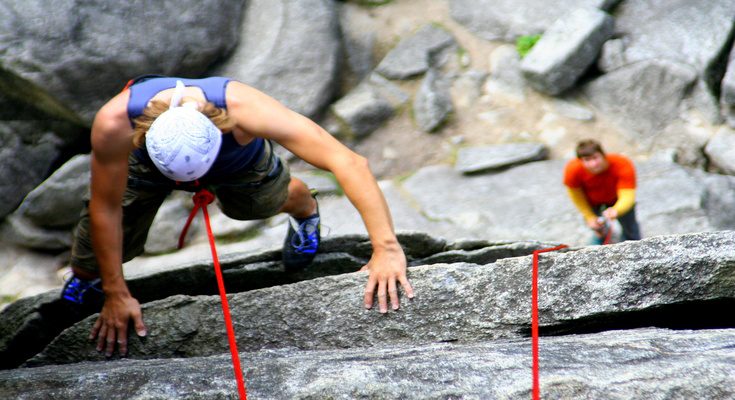If you’ve ever tried rock climbing, you’ve probably heard the term “belay.” But what exactly is it, and how does this crucial safety system actually work? Let’s break it down in simple terms.
What Is Belaying?
Belaying is essentially the safety net of rock climbing. It’s a technique where one person (the belayer) manages the rope to protect their climbing partner. The belayer is essentially a spotter who can catch you if you fall.
The Basic Setup
The belay system involves four main components: the rope, a belay device, an anchor point, and proper hand positioning.
The Rope Connection
The climber ties into one end of the rope using a figure-eight knot. The other end goes through the belayer’s belay device, which is attached to their harness with heavy-duty carabiners.
The Anchor
The belayer is usually anchored to the rock face or secured at the base, depending on whether you’re doing top-rope or lead climbing.
Hand Positioning
The belayer keeps one hand on the “brake side” of the rope (the side that goes down) and uses the other hand to manage slack.
How It Works
When a climber falls, the belay device creates friction on the rope, which helps the belayer stop the fall. Belay devices are designed to lock automatically when loaded suddenly—like during a fall.
The belayer’s job is to do the following:
- take up slack as the climber moves up
- give rope when the climber needs to move
- lock off the rope during a fall
- lower the climber when they’re ready to come down
Types of Belay Devices
These are a few types of belay devices:
- Tube devices pinch the rope when pulled in the braking direction.
- Assisted-braking devices have a camming mechanism that locks the rope during a fall.
- Figure-eight devices are mostly used for rappelling, but they can work for belaying too.
The Communication Piece
The belay system in rock climbing only works if both climber and belayer understand their roles. Both individuals must use specific commands like “on belay,” “belay on,” “climbing,” and “take” to stay coordinated.
Wrapping Up
Remember, belaying isn’t something you learn from reading alone. Take a climbing class, get proper instruction, and practice with experienced climbers before you trust your life to the system.
The belay system might seem complicated at first, but once you understand the basics, you’ll appreciate how this simple yet effective setup keeps climbers safe on the rock.



